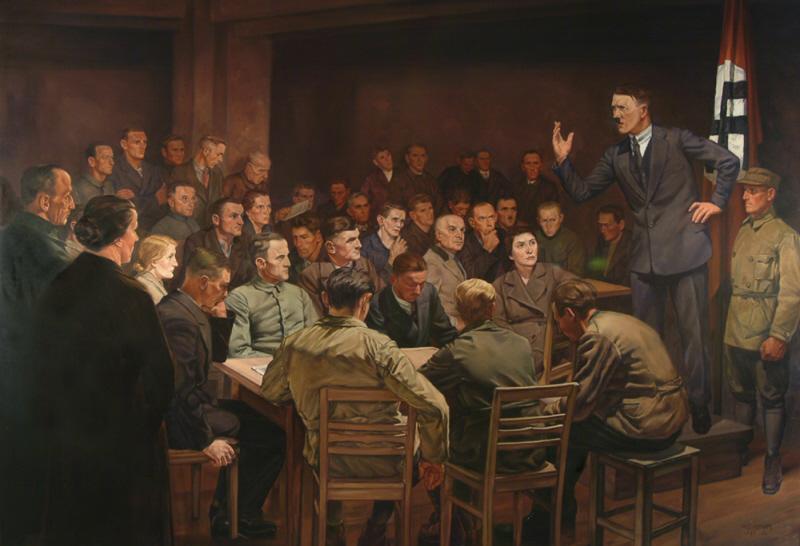Scary. Concerning. There are, perhaps, no two adjectives that so accurately describe Nazi art. “Museum Unter Tage” in Bochum is showing Nazi artworks to show the division between art and ‘unart.’
The showing ‘Artige Kunst’ (Permissible Art) is a play on the word ‘entartet’ used by the Nazis to describe degenerate art.
Curator Alexander von Berswordt-Wallrabe said he decided on the exhibit in the small museum for a number of reasons but makes clear Nazi artwork is, without question, completely unacceptable today, and he believes the public has to take note themselves. By the same token, Nazi artists work hasn’t been seen since 1945, so why turn the art pieces into martyrs?
Not everything, as they believed, is propagandistic. Hitler’s portrait, war, and other Nazi murals account for 10 percent of the total works. Americans retained the majority of the propaganda pieces. Ninety percent of what viewers see in pictures looks harmless at first, he explained.
Actually, they also are ammunition for propaganda, but for a type of reality that wasn’t there at that time. There are pictures of mythological images, portraits, ideal visions of industrial sites, and healthy, beautiful families. However, the difficulty is when they were created, between 1939 and 1945, everything around them continued to be bombed to pieces.
As they now are aware, the killing of six million in the Holocaust was well known at the time, von Berswordt-Wallrabe continued. So the artists, who at the request of the regime painted innocuous pictures, look so imaginary they can’t be considered art, DW.com reported.
The pictures are juxtaposed so they can talk to one another. They call Nazi art ‘artige,’ permissible because it conflicts with ‘entartet.’ That is the word used by the Nazis for art they didn’t like. When a person thinks of great artists such as Cézanne, Picasso, and van Gogh, it’s very disconcerting for a viewer to those works contrasted with Nazi material.
